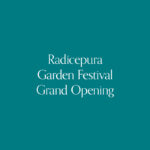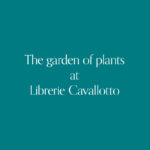Ignivomus Hortus is a satire of the modern era, where humanity is slowly but inexorably raising global temperatures, triggering climate factors that will lead to unpredictable chaotic events in the future.
Visitors are encouraged to sit on ancient building materials, creating the impression of being in a wild and untamed place. The elevated chimney serves almost as a beacon of hope for humanity—a light in the darkness—as well as a reminder of both the destructive and creative power of the mighty nearby volcano, Mount Etna, which hosts an environment similar to that of the garden.
The garden represents a new land, a volcanic landscape where only a few individuals have adapted to thrive in harsh living conditions. Its vast openness evokes a sense of awe. Expansive landscapes stretch toward an infinite horizon, where the sky meets the earth in a majestic embrace. Spacious and open, these panoramas inspire a feeling of freedom and tranquility. The air feels lighter, breathing becomes easier in this confined expanse. It is a place where the mind can wander, lost in the immensity of contemplation, and where the soul can find peace and wonder.
This space is a study in contrasts. The black volcanic sand, like a moonlit sky, ripples under the gentle breeze, reflecting the serene sky above. Tall grasses, swaying rhythmically, create a sense of isolation. Carefully placed stones, symbols of strength and permanence, punctuate the minimalist design. This intimate space is a place of contemplation, where the mind finds solace in the harmonious play of light and shadow and the soothing rustle of grass.

Guðmundur Björnsson is a Landscape Architecture student at the Agricultural University of Iceland. He has worked as a ranger in Iceland’s highlands, an experience that allowed him to discover his talent for finding new paths in the wilderness, reading landscapes, and creating trails.





